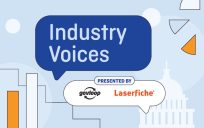At almost every conference I’ve gone to this year, there have been several presentations on diversity, equity and inclusion. Some of the conferences have even made equity and inclusion the programming theme. We spend a lot of time talking about DEI, what it looks like, how to measure it and why it’s important.
I realize transforming the way we approach equity isn’t going to happen overnight, but using technology in the right way can help us get there more quickly. We’ve seen how government assistance programs improve the lives of our community and also have been frustrated by how outdated processes make it difficult to reach those who are most underserved.
To make programs more equitable, we must determine who is falling through the cracks and why. The key is high-quality, precise data. The technology already exists to collect this data, but intention is required to design programs that keep equity in mind every step of the way.
Here are three ways to combine technology with people and processes, to drive greater equity in assistance programs:
- Partner with trusted community messengers
In my experience, we can get a more complete picture by tapping into existing data sets from nonprofits, chambers of commerce and other community-based organizations to identify demographics that have a harder time accessing services and programming. Collaborating with these community organizations also can ensure that messaging is on-point and drives more application submissions. If people hear about a program from a trusted community member, they’ll be more likely to apply.
- Consider barriers for application access and submission
Equity is more than offering resources in Spanish, for instance. Our communities often speak multiple languages, so make sure language isn’t a barrier when getting the message out.
Digital literacy levels also vary throughout communities, and people most in need often lack computer access to fill out an application digitally, or need more time to compile all required information proving their eligibility. Offering applications in several formats and languages can help ensure everyone has access to the same information and processes. Announcing application dates and requirements at least two weeks before application periods officially begin should give people plenty of notice.
Also, keep in mind that while approving applications on a first-come-first-serve basis incentivizes people to submit theirs as soon as possible, it sometimes can mean that people who need relief the most end up at the bottom of the pile. Reviewing applications in batches and prioritizing based on need embeds equity into the process.
- Monitor program progress and make adjustments accordingly
Utilize data to measure equity. Hard-to-reach communities are often overlooked, but it’s possible to if you’re collecting data properly, identifying specific zip codes and ethnic and racial groups, etc. that aren’t submitting applications. Monitor this data in real-time, and be willing to tweak your programs’ designs to drive desired outcomes. Data unlocks the ability to identify who requires additional outreach, and partnering with community organizations or sending direct mailers to reach people where they are enables a more targeted and effective approach.
Without good data, there is no equity. While I am a huge data nerd, I realize data collection can be a daunting order. So, my advice to people overwhelmed by data analytics is to integrate data into the entire program administration process, instead of making it one large, scary step. When you integrate, you make data-driven decisions every step of the way, which encourages more equitable outcomes.
As founder and CEO of FORWARD, Adnan is passionate about using data and technology to tackle the world’s biggest challenges. Through FORWARD, he has worked with more than 200 customers around the world and has been featured as a Gov100 company every year since 2016. Prior to founding FORWARD, Adnan worked for eight years at Microsoft, where he managed the company’s largest data pipelines and received multiple patents in data analysis, visualization, and management. In addition, Adnan is co-founder of Jolkona, a nonprofit that provides mentorship and training for social entrepreneurs. Adnan earned his master’s degree in Computer Science from the University of Southern California.





Leave a Reply
You must be logged in to post a comment.